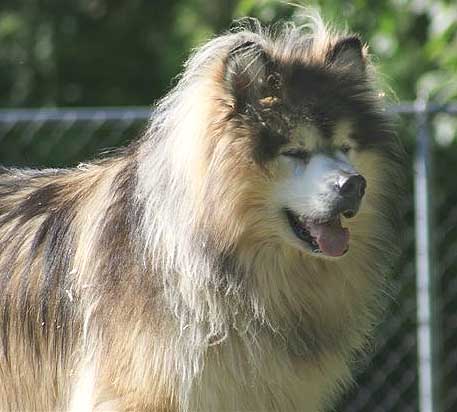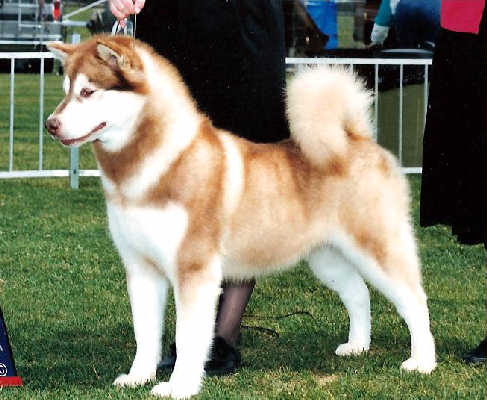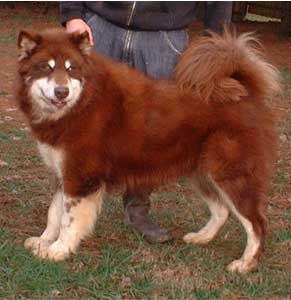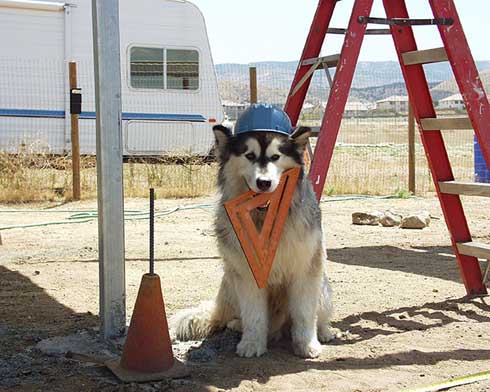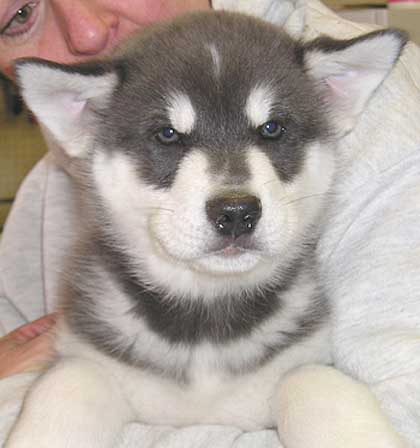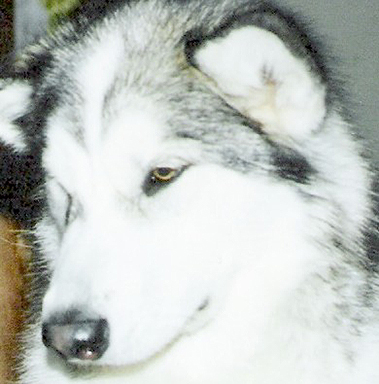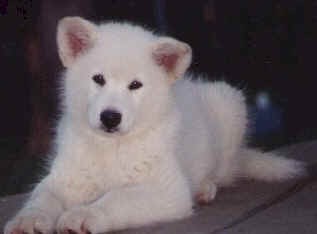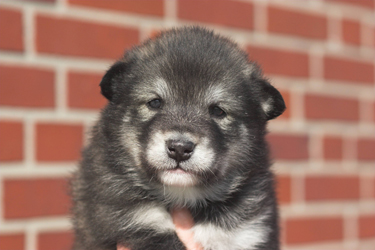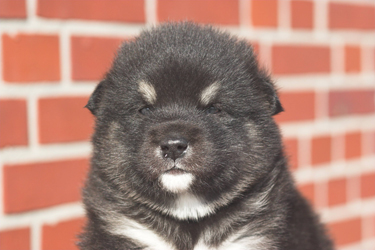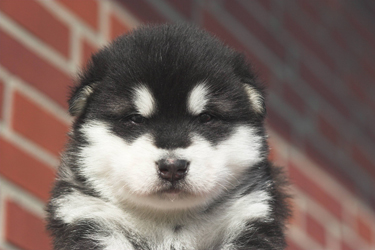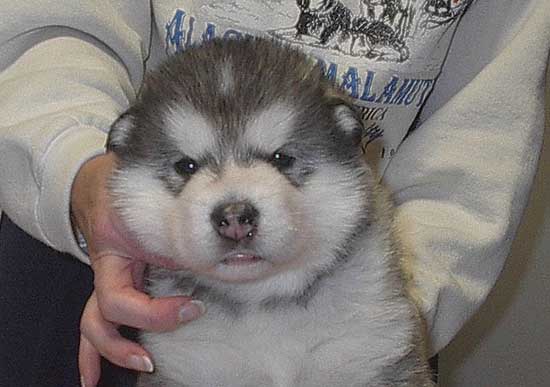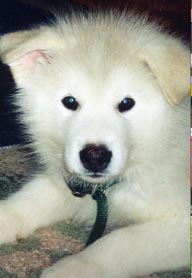Genetic Testing
Coat color and coat length genetic testing
For many years genetic testing has been talked about within our breed. Usually the topic is focused on genetic testing for diseases. Slowly we are seeing some progress in our own breed, and a great deal of research is currently underway.
While genetic testing is not currently available formost health issues in our breed, there are several tests available for coat length and coat color. Though these tests are not relevant from a health perspective, they do provide breeders who choose to use them with one more piece of information.
The coat color tests which are currently available serve an additional purpose. They provide an opportunity for breeders to become aware of, and familiar with, the concept of genetic testing and how it can be used. This will become important when more health related genetic tests do become available for issues affecting our breed.
Because this is an ever-changing field with new genetic tests being developed all the time, I will do my best to update the information posted here as often as it is practical to do so.
What is genetic testing?
Genes are made up of DNA. Each gene acts as instructions, controlling one specific part of a dog’s physical characteristics. Every dog has two copies of each gene, one inherited from their mother, one from their father.
Alleles are forms of the same gene with small differences in the sequence of their DNA (mutations). Each different allele causes a slightly different effect. In many cases there are just two alleles. There is no limit, however, and some genes have a number of different alleles.
Genetic testing is the taking of a DNA sample from a particular dog and processing it to extract information. Each genetic test is looking for mutations or particular alleles on a gene. The results show which alleles a dog inherited from its parents.
Genotype vs Phenotype
Genetic testing is testing for a dog’s genotype. Genotype is the genetic makeup of the dog. Simply put, genetic testing tells you what two alleles of a particular gene a dog has inherited from its mother and father.
Phenotype is the actual appearance of a dog. It is those things you can see with your eyes. Often a dog’s phenotype gives us a general idea of its genotype, but does not give complete information. Genes which are recessive and carried can’t usually be seen in the dog’s phenotype. They can, however, be detected through genetic testing.
What is the process?
Performing a genetic test on a dog is very simple, and can be done at any age. A DNA sample is all that is needed. For some tests this involves going to the vet and having a blood sample drawn. This blood sample is then sent to the testing laboratory.
Many genetic tests available to dog fanciers are much simpler and don’t require a vet. Instead a test kit is simply sent to the owner of the dog. This kit includes several swabs or Q-tip size bristle brushes and an envelope to place them in. These swabs are scraped along the inside of the dog’s cheek, collecting skin cells. They are then mailed back to the laboratory, and provide enough DNA suitable for testing.
How Accurate are Genetic Tests
In the United States the Food and Drug Administration (FDA) does not regulate genetic tests developed by laboratories. These tests are categorized as services, and there are no regulations for evaluating their reliability.
Though there is no government regulation on these kinds of genetic tests, in general they fairly accurate. This is pure business sense. Most individuals utilizing these tests are breeding their dogs. If the actual results of a breeding conflict with test results, the accuracy of the test comes into question. It would not take many such incidents for dog fanciers to loose trust and stop utilizing that particular test. That said, there have been issues with some tests being offered to the public and then producing surprisingly inaccurate results. There also have been cases where tests are accurate for one breed, but not for another. Thus it pays to become familiar with available tests and how much accuracy they have proven to have with your breed.
What tests are available
There are currently an assortment of genetic tests available that relate to Malamutes. These include not only the test for coat length, but also several tests for coat color genes.
Coat length
L Allele (Long coat)
The gene causing hair length differences is fibroblast growth factor 5 (FGF5). FGF5 normally tells the hair to progress from the anagen (growth) phase to the catagen (transitional) stage. A mutation in FGF5 can cause the hair shaft to continue growing for a longer period of time before the catagen phase is reached, resulting in much longer hair.
This gene is responsible for normal and long coats in Alaskan Malamutes. This was the first DNA test available for Malamutes and it has shown to have a high degree of accuracy. We use the symbol "L" for this gene. This is a simple recessive gene with the long coat mutation being recessive to “normal” coat. There are three potential genotypes:
N/N – (clear) Normal “short” coat and not a carrier of Long Coat (LL)
N/F – (carrier) Normal “short” coat but has one copy of the short hair allele and one copy of the long hair mutation (Ll)
F/F – (affected) Long Coat and have two copies of the long hair mutation (ll)
Coat Curl, Furnishings, and Hairlessness
There are now also DNA tests for curly hair, furnishings, and hairlessness. None of these tests apply to Malamutes
Coat Color
B Locus (Brown – Red in Malamutes)
The gene responsible for brown coat color in dogs is Tyrosinase-related protein 1 (TYRP1). This gene controles an enzyme that completes the final step in eumelanin (black/brown pigment) synthesis. When one of several recessive mutations cause the enzyme to be inactivated, brown pigment fails to change to black. The result is that areas within the coat containing eumelanin pigment appear brown rather than black. In addition the pigmented areas of skin (eyes, nose, lips, pads) also are brown, and the color of the eyes is lightened.
This is the gene responsible for Red in Malamutes. A number of Malamutes have been tested for this gene and the test has proven to be accurate. We use the symbol B (brown) for this gene. It is a simple recessive gene where the allele for brown is recessive to the allele for Black. There are three potential genotypes:
BB – Eumelanin pigment is black. Has two copies of the “black” allele so does not carry Red.
Bb – Eumelanin pigment is black. Has one copy of the black allele and one copy of the brown allele, so carries red.
bb – Eumelanin pigment is red. Has two copies of the brown allele.
D Locus (Dilute – Blue in Malamutes)
Melanophilin (MLPH) is the gene which has been identified as causing color dilution in dogs. This gene controls a protein which is responsible for the transportation of both eumelanin (black/brown) and pheomelanin (red/yellow) pigment within the cells. When a mutation at this gene causes the transportation system to be disrupted, pigment within the hair is deposited in clumps rather than evenly. The net result is that the intensity of both eumelanin and pheomelanin in the coat is reduced and the dog’s coat takes on a faded out or lighter appearance. This affects not only the hair but also the nose, lips, pads, and eyes. Eumelanin (black/brown) is turned gray and pheomelanin (red/yellow) is turned cream.
This is the gene responsible for Blue in Malamutes. There have not yet been any blue Malamutes tested, so we do not know if the test is accurate for this breed. We use the symbol D (dilute) for this gene. It is a simple recessive where the allele for blue (dilute) is recessive to the allele for Black. There are three potential genotypes:
DD – Eumelanin pigment is black and pheomelanin pigment is red. Has two copies of the non-dilute allele so does not carry Blue.
Dd – Eumelanin pigment is black and pheomelanin pigment is red. Has one copy of the non-dilute allele and one copy of the dilute allele, so carries blue.
dd – Eumelanin pigment is gray and pheomelanin pigment is cream. Has two copies of the dilute allele.
E Locus (Extension – White in Malamutes)
The Melanocortin 1 receptor (MC1R) gene controls the ratio of eumelanin (black/brown) and pheomelanin (red/yellow) pigment on a dog. A mutation which causes a loss of function in this receptor will result in exclusive production of pheomelanin (red/yellow) pigment.
The most dominant allele Em (melanistic mask) causes a black mask on the dog’s muzzle and face as seen in all Pugs, Boxers, Bull Mastiffs, Tervurens, and Scottish Deerhounds as well as some Akitas, Great Danes, German Shepherds, and even some Toy Poodles. This allele does not occur in Malamutes.
The recessive allele allows only pheomelanin (red/yellow) pigment to be produced over the entire body of the dog. This means that regardless of what the dog’s coat is otherwise programed to look like, only red/yellow pigment can be seen. There are a number of breeds where this is common including goldern retrievers and yellow labs. In Malamutes pheomelanin pigment rarely actually looks redish or cream and instead it is almost always white. Thus this is the gene responsible for producing white Malamutes. At this time no one is sure of the mechanism that causes white instead of cream in Malamutes and some other breeds like Jindos and Samoyeds. Several Malamutes have been tested for this gene and the test appears to be accurate.
Because Malamutes do not have the allele for melanistic mask, we will only consider the other possiblities. For our purposes then, there are three potential genotypes:
EE – Eumelanin pigment is black, pheomelanin pigment is red, and both are distributed throughout the coat as dictated by the other Loci. Does not carry White.
Ee – Eumelanin pigment is black, pheomelanin pigment is red, and both are distributed throughout the coat as dictated by the other Loci. Carries White.
ee – Only Pheomelanin pigment is produced over the entire body of the dog, thus the entire dog is red/yellow – or in the case of Malamutes it is white.
A Locus (Agouti – Agouti, Gray, Tan Point, Seal, and possibly Silver in Malamutes)
The alleles at this locus control the distribution of both eumelanin and pheomelanin. This occurs both over the entire coat as a whole and on individual hairs. Thus this locus is responsible for determining the presence of primarily pheomelanin (red/yellow) on the bottom and eumelanin (black/brown) on the top in Tan Point dogs. It is equally responsible for producing the banding in the hairs on the backs of agouti dogs. It also may be responsible for the black tipping on Silver Malamutes.
There are 4 alleles at this locus. In decreasing order of dominance:
Ay – Dominant Yellow. Fawn or as seen in sable collies, and not what we call sable in Malamutes. There is conflicting evidence on the presence of this gene in Malamutes, with the same dog testing positive at one lab and negative at another. At this time this test can not be considered to be conclusive in Malamutes.
Aw – Wild color. Agouti, and in Malamutes this locus also causes Gray when in combination with the Domino gene. A test has been developed for this gene, however the accuracy of the test for Malamutes is questionable.
at – Tan Point. Black and White, and in Malamutes this locus also causes Seal when in combination with the Domino gene.A test has been developed for this gene, however the accuracy of the test for Malamutes is questionable.
a – Recessive Black. Solid black with no tan or white underparts. This allele is not found in Malamutes.
It should be understood that this test does NOT have anything to do with testing for the Domino locus. When testing become available for the two loci of primary interest to Malamute fanciers, if accurate for the breed this test will provide information on the presence or absence of the Agouti gene and the Tan point gene. Remember that the Agouti gene is responsible for producing both the color agouti and the color gray, as the tan point gene is responsible for producing both the color Black and White and the color Seal. A test at this locus does not provide information on a dogs ability to produce the color Agouti vs the color Gray. Nor will it differentiate between the color Black and White and the color Seal.
Other tests of interest
There are several other genetic tests which give us information about coat color. These tests are interesting, however in Malamutes they do not provide information of value at this time.
K Locus (Dominant Black)
Dominant black is caused by a mutation in CBD103, a Beta-defensin gene. The alleles at this locus control the presence or absence of eumelanin (black/brown) and pheomelanin (red/yellow) pigment in the coat.
There are three alleles at this locus. In decreasing order of dominance:
KB (or K) - Dominant Black. Only eumelanin (black/brown) pigment is produced. The dog is solid black and does not have any red/yellow pigment. This allele is not found in Malamutes.
kbr – Brindle. Allows for a pattern of black/brown and red/yellow stripes over the dog. On tan point dogs these will only be visible in the “tan” areas. This allele is not found in Malamutes.
ky – Allows for the expression of pheomelanin (red/yellow) pigment. The actual pattern of pigment on the dog’s coat is determined by the allele at the agouti locus.
While a DNA test is available for dominant black (K), this is not of any practical use in Malamutes. The alleles K and kbr do not occur in Malamutes, so we know without testing that all Malamutes are homozygous for ky
S Locus (Random White Spotting - Piebald)
Piebald spotting in dogs is associated with the gene microphthalmia-associated transcription factor (MITF). The recessive allele produces random white spots which are not necessarily symmetrical and which typically cross the dogs back in between the shoulders and the tail.
S – Solid. No white spotting
sp – Random white spotting usually crossing the dorsal surface of the dog.
While a DNA test is available for spotting in a few breeds, it is not available for Malamutes at this time. One piebald Malamute has been tested and came back Ssp. This result was confusing given the absence of any white spotting on either parent, so at this time the usefulness of this test can be considered inconclusive.
This type of white spotting is NOT the same white spotting that most commonly causes white markings in Malamutes. For more details visit my white spotting page
